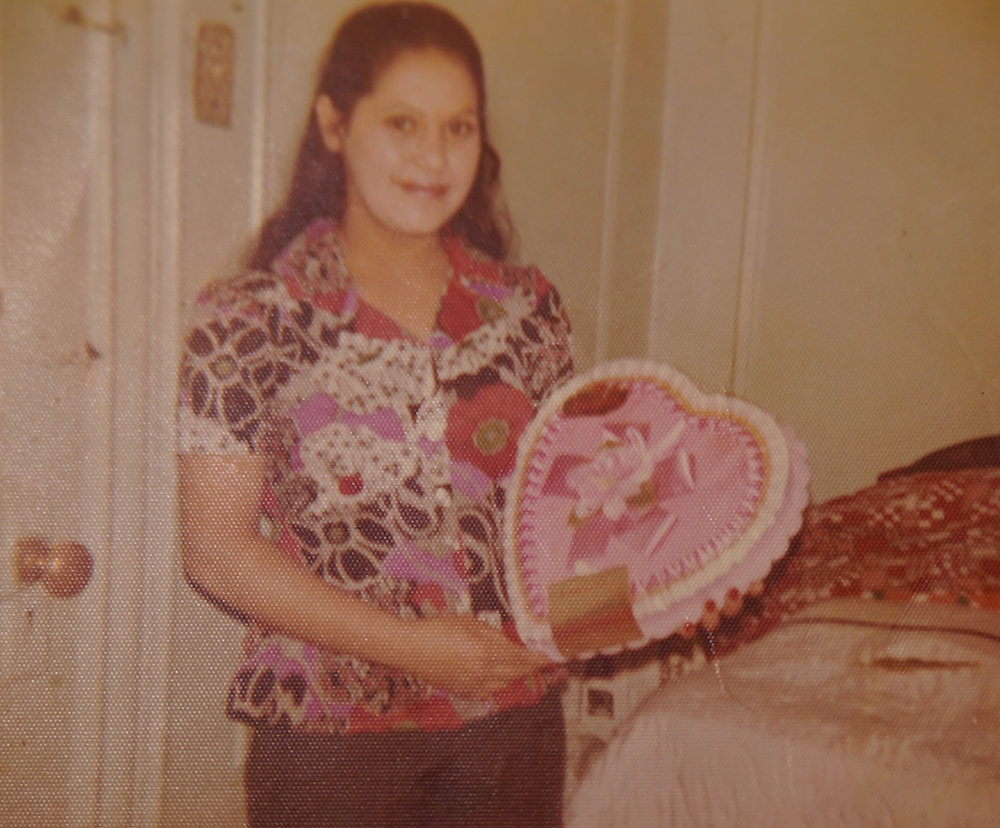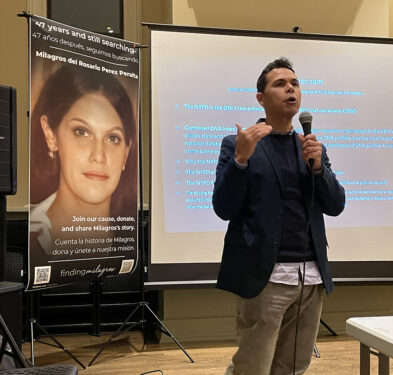
WILLIAMSBURG — Milagros Perez Peralta will turn 70 years old this coming August 29. Or perhaps not. The sad thing is, her family isn’t sure.
That’s because Milagros has been missing for nearly 48 years and her family has no idea if she is alive or dead. She was 22 years old and four months pregnant when she vanished without a trace from a Williamsburg street in 1976.
Family members told The Tablet they strongly believe she was kidnapped, but whatever trail they could have followed leading to her kidnaper has gone cold.
They are desperate for answers, and that sense of urgency has only grown over the years. “We want closure,” said her brother Rafael Perez, who was just 10 years old when she disappeared. Milagros was one of 11 children born to parents who came to the U.S. from the Dominican Republic in search of a better life.
“If she is dead, we can accept that, as tragic an outcome as that is. We just want to know what happened to her,” Perez added.
Still, all this time later, they are desperate for answers and that sense of urgency has only grown over the years.
The family gathered for a vigil at Sts. Peter and Paul-Epiphany Parish in Williamsburg on Feb. 3 — National Missing Persons Day — to ask for the community’s help in raising awareness of Milagros’ case.
The family also asked those in attendance at the vigil to join their effort to ask the NYPD to reopen the case.
The family’s search for records or any bits of official information about the case has been an arduous task, and that task has only grown more difficult with the passage of time, Perez said.
In April 2022, Perez filed a Freedom of Information Law (FOIL) request with the NYPD for records in his sister’s disappearance. The request was denied, so Perez filed an appeal in January 2023, which was also denied.

In a letter to Perez dated March 20, 2023 explaining the denial, a NYPD sergeant wrote that a “diligent search has been conducted” and that no records from the long-ago case were found.
But after Perez requested a judicial review, the NYPD conducted another search and found a handwritten missing persons report dated Sept. 3, 1976 — a few days after Milagros was last seen — from the 114th Precinct in Astoria.
Perez explained that at the time of Milagros’ disappearance, family members went in person to both the 90th Precinct in Williamsburg, the neighborhood where she was last seen, and the 114th Precinct in Astoria, where she lived, to report her missing.
It was a hot summer day — Aug. 30, 1976, to be precise — when Milagros was last seen. What is known is this: Milagros, a trained seamstress who was unemployed at the time, had visited a Department of Labor office on South 5th Street in Williamsburg that day to sign for her unemployment check.
She might have been in a good mood, with an extra bounce in her step. After all, she was a young woman in love with her boyfriend, with whom she lived and with whom she was expecting a child, and she had just celebrated her 22nd birthday the day before.
In those days, before the internet made it possible to conduct most of one’s personal business online, unemployed people had to go to a Dept. of Labor office in person once a week to sign for their checks. The checks were then mailed to them.
Perez said there is a record of Milagros having signed for the check on Aug. 30, 1976, so the family knows for sure that she was there that day.
Milagros had made plans to visit with a relative who lived in Williamsburg after she got through with her unemployment office visit.
She never got there.
As the hours passed and there was no sign of her, worried family members organized search parties. They visited the two precincts to report her missing.
Around this time, the family heard a rumor that a man confronted Milagros outside the unemployment office, threw her into a van and drove away. The family believes that report to be accurate, Perez said.
Ana Infante, another one of Milagro’s sisters, still remembers today how she felt when her sister vanished. “That was a terrible day. I was so sad. I was confused. She was such a good girl. I couldn’t figure out what happened to her,” she said.
Milagros’s niece, Maribel Estevez, was only 6 years old at the time but she, too, has vivid memories of that terrible time.
“I remember seeing my grandmother and she was completely devastated,” Estevez said. “She had always been a very strong person, a real matriarch. But I remember her that night, sitting in a chair basically about to collapse because of the anguish.”
Milagros was a young woman who showed such promise, her family said.
A lively, fun-loving girl, she grew up with her siblings in the Dominican Republic and had a happy, carefree childhood.
“We were close. We played together as children,” Infante fondly recalled. “I remember how we used to climb trees and pick lemons and oranges.”
Espinal described her as a wonderful sister who had a love of the great outdoors. “When we lived in the Dominican Republic, she loved riding horses,” she said.
Linda Corona was a childhood friend. “She was a very humble, nice person, always thinking of others,” she said.

Milagros loved fashion and used to make her own clothes. “She had real style. She always knew she was going to get a job involving sewing,” Perez said.
She also had a rebellious steak, however. Her parents pushed her into marriage to a man she did not love, Perez explained. She agreed to the marriage but would show her displeasure in different ways.
The family left the Dominican Republic and came to the U.S. to live, although not all family members came at once. Milagros arrived in 1973 at the age of 19 and moved in with her sister Maria and her sister’s husband in Williamsburg.
She obtained a green card and got a job in a clothing factory, a position that gave her the chance to put her sewing skills to good use.
Before long, she met a man, fell in love and decided to move in with him. The couple settled into an apartment in Astoria. Milagros was still technically a married woman, so the couple could not be married. But Milagros was happy, her family said.
Three years later, in 1976, she learned that she and her boyfriend were expecting a baby. Her family said she was happy.
It all came crashing down on Aug. 30, 1976, when she vanished. The disappearance is a mystery that still haunts her family.
Her mother died in 2009, never knowing her daughter’s fate or the fate of her unborn child. “She knows now,” Perez said ruefully.
Over the years, family members have had different ways of coping, Perez said. Some siblings talk about the case while others would prefer not to. People have moved on with their lives. Milagros’s boyfriend, for instance, eventually married and started a family, Perez said.
However, the mystery of Milagros still hangs over the family like a fog. Even younger members, who never met Milagros, can feel it. “The younger people in our family grew up hearing stories about Milagros. It’s a way of keeping her with us,” Estevez explained.
With the 48th anniversary of Milagros’s case coming up this summer, the family is stepping up its search for answers. They created a website called www.findmilagros. com to raise public awareness and held the vigil to further that awareness effort.
Perez, a psychotherapist, explained that the family is anxious to reopen a Missing Persons file because it would allow the NYPD’s Missing Persons Squad to activate CODIS, the U.S. Department of Justice’s national DNA database.
CODIS, which is an acronym for Combined DNA Index System, would enable the family to learn if Milagros’s DNA is in that system, if her unidentified remains were found and her DNA was taken, for example.
A spokesperson for the NYPD told The Tablet the agency needed to do some research into the matter before commenting on the long-ago case.
